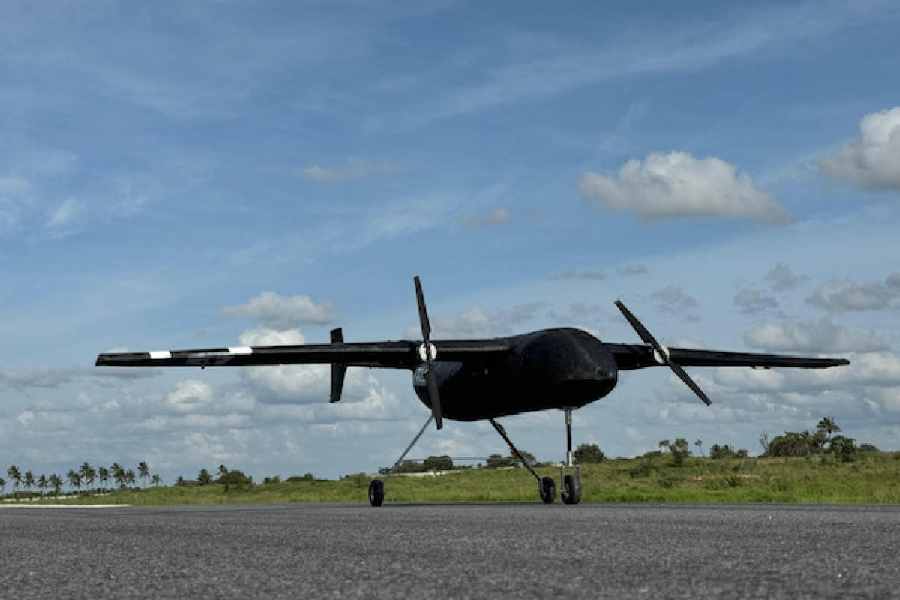The country’s first unmanned bomber aircraft, FWD 200B, has carried out its maiden flight, putting India among the global few with locally made unmanned fighters.
The lethal effect of such UAVs was demonstrated in the Russia-Ukraine conflict and the Iran-Israel skirmishes.
Developed by Flying Wedge Defence and Aerospace (FWDA), the bomber has surveillance capabilities and is integrated with missile-like weapons for air strikes and bombing.
“India is the world’s largest importer of arms in the last five years and has often paid up to 10 times the cost for military technology from countries such as the US and Israel. The successful flight of the FWD200B is not just an achievement for our company but a victory for the entire nation,” Suhas Tejaskanda, founder and CEO of FWDA, told The Telegraph.
Increasing terrorist intrusion into Jammu and Kashmir and the continued border tension with China make a strong case for the use of such UAVs in surveillance and conflicts.
“With Turkey’s denial of the Bayraktar UAVs to India, which it has supplied to Pakistan and the US Predator deal on hold for two years, the nation now has its bomber UAV, advancing into the realm of unmanned warfare,” Tejaskanda said.
“While the US Predator costs a staggering ₹250 crore, our indigenous FWD-200B, built with state-of-the-art technology and manufactured in India, slashes the cost to a mere ₹25 crore. This demonstrates our commitment to self-reliance and positions India as a leader in cost-effective defence solutions.”
The manufacturing plant for the FWD-200B is a 12000 sq ft unit on 1.5 acres in Electronic City. The bomber aircraft has a payload capacity of 100 kg and is classified as MALE Unmanned Combat Aerial Vehicle (medium-altitude, long-endurance).
It can carry a maximum 498 Kg and holds a ground control station (GCS) range of 200 km.
While having a maximum speed of 200 kts/370 kmph, it has an endurance capacity of 12-20 hours.
Tejaskanda said the country holds the potential for at least 5,000 such UAVs and given its robust and cost-efficient configuration, it can compete globally.
He said the UAV has attracted the attention of several African and Southeast Asian nations and the firm would be keen to ship them.
Developing the UAV as a start-up had its own teething troubles and the government’s procedural issues — from registration to getting the funds — had put off several investors, who advised him to shift base.
“In the US, it might take two hours for a start-up to register, but it takes 12-18 days for the initial registration in India.
“The taxation and accounting procedures are so tedious that start-up owners would have to spend more time on that, than innovating the product.”

